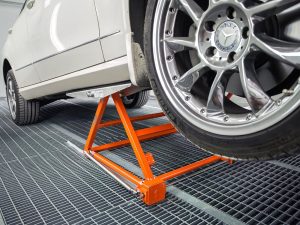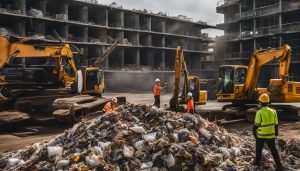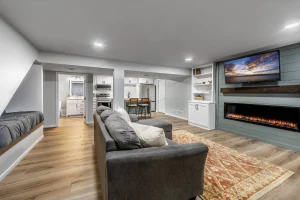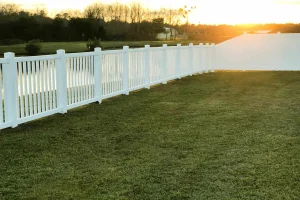Inside Clarksville’s Roofing Boom: What Homeowners Should Know Before Hiring
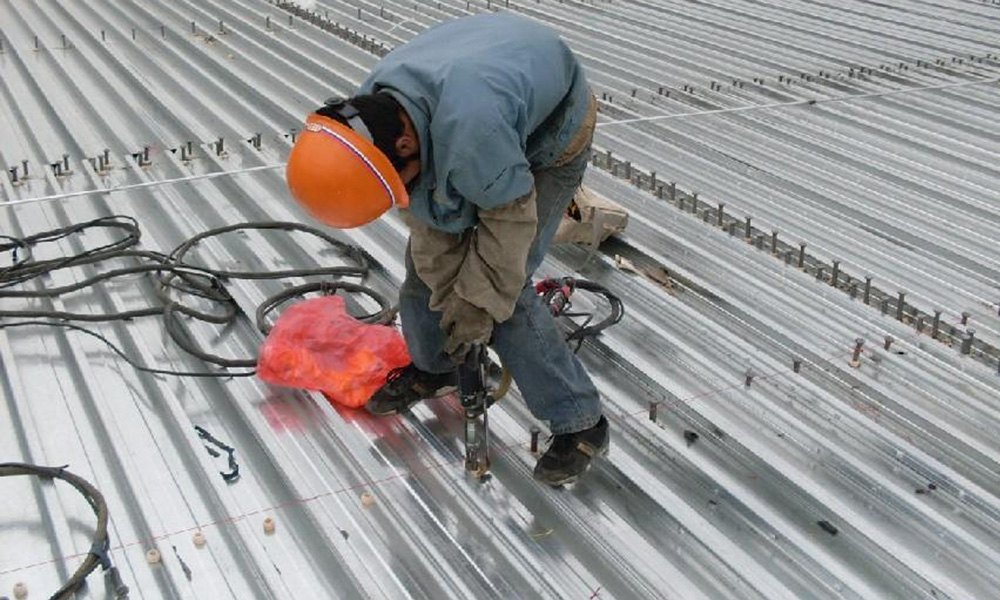
Clarksville’s surge in new builds and renovations has put roofs at the center of many homeowners’ plans, but rapid growth invites both opportunities and pitfalls. Competition among contractors is intensifying, timelines are tightening, and code standards are evolving to keep pace with modern performance needs. Local homeowners often turn to Clarksville Roofing Company options that combine strong credentials with clear communication, yet differentiating bids can still be tricky. This guide breaks down the critical questions to ask, the materials to compare, and the technology that can lower utility bills in Tennessee’s climate. Along the way, you’ll see how trusted partners like Quality Exteriors support inspections, repairs, and energy-efficient upgrades that align with today’s expectations.
Clarksville’s Rapid Housing Growth and Its Roofing Demands in 2025
Clarksville’s continued population influx and multifamily development are pushing roofing schedules to capacity in 2025. As new subdivisions expand toward commuter corridors, builders and homeowners are competing for installation slots, qualified crews, and top-tier materials. Local codes and wind ratings are also becoming more exacting, which means subpar products or rushed workmanship can’t keep up with modern standards. You’ll find that lead times for specialty shingles, metal panels, and skylights can fluctuate, especially around storm seasons when demand spikes. To secure a dependable timeline and outcome, you’ll want transparent scopes, firm material selections, and a contractor network that can scale without sacrificing quality.
What growth means for scheduling, materials, and quality control
Construction booms often create bottlenecks in freight and local warehousing, so you may see longer waits for certain colors, impact-rated shingles, or venting accessories. A reputable Clarksville Roofing Company will give you realistic dates, outline contingency options, and provide written change-order procedures if availability shifts. Ask how the contractor balances multiple jobs, what the daily crew size will be, and who oversees on-site quality checks. It’s also smart to confirm that your contractor has backup suppliers, so your project doesn’t stall over a single-lot shortage. In a fast-moving market, clear scheduling discipline and documented product choices protect your budget as much as your roof.
Key Questions Every Homeowner Should Ask a Roofing Contractor
Before signing a contract, anchor your conversations with questions that expose the installer’s methods and reliability. Start with licensing, general liability, and workers’ compensation; then verify that coverage by requesting certificates directly from the insurer. Ask whether the company uses in-house crews or subcontractors, and if subs are used, how they’re vetted and insured. Probe into the full system components—underlayment type, ventilation plan, flashing details, drip edges, and fasteners—because durability hinges on the details you can’t see from the curb. Finally, clarify who pulls permits, how inspections are scheduled, and how post-job cleanup will remove nails and debris.
Dig deeper into scope, timeline, and payment protections
Once you’ve covered the basics, explore project controls. Request a written, line-item scope that notes tear-off versus overlay, decking repairs per sheet price, and treatment of rotten wood. Establish a timeline with weather contingencies, but press for a dedicated start window and daily work hours, so expectations are realistic. Discuss payment schedules that tie deposits and progress payments to milestones rather than vague promises, and ask for lien waivers with each payment to protect your home from supplier claims. To complete your due diligence, request recent local references, photos of similar roofs, and a sample close-out package that shows warranties, material receipts, and proof of final inspection.
Comparing Metal, Asphalt, and Composite Roof Lifespans
Choosing a roofing material is about far more than color; it’s a balance of lifespan, maintenance, and fit for your neighborhood. Asphalt architectural shingles remain the most common, offering broad style choices and a typical service life in the 20–30 year range when installed and ventilated correctly. Metal roofing—steel or aluminum—can extend lifespan to 40–70 years with proper coatings and fasteners, plus enhanced wind performance. Composite or synthetic options mimic slate, shake, or tile at a fraction of the weight, often delivering 30–50 years of service and high impact resistance. The right fit depends on budget, curb appeal, and how long you plan to own the property.
Durability, climate factors, and total cost of ownership
Tennessee’s sun exposure, humidity, and storm cycles can shorten or extend lifespans depending on installation quality and attic ventilation. As asphalt shingles age, watch for granule loss and curling; with metal, maintenance often focuses on fastener integrity and coating preservation; composite profiles tend to resist cracking but still require sound flashing work. A Clarksville Roofing Company that understands local microclimates will size ridge and intake vents properly, preventing heat buildup that accelerates material fatigue. Total cost of ownership also includes insurance considerations—impact-rated materials can help with premiums and reduce repair frequency over time. Compare not just upfront bids but also the maintenance cadence and replacement horizon each material implies.
How Modern Roofing Technology Improves Energy Efficiency
Energy-efficient roofing isn’t just a marketing term; it’s a set of measurable strategies that reduce heat gain and stabilize indoor comfort. Cool roof shingles and metal panels with reflective pigments bounce more solar energy away, especially valuable during Tennessee’s hot summers. Advanced synthetic underlayments and radiant barriers add another layer of thermal control, while balanced ridge-and-intake ventilation keeps the attic from turning into a heat reservoir. Sealed roof decks and high-performance flashing reduce air leakage that undermines HVAC efficiency and indoor air quality. When these components work in concert, you lower strain on mechanical systems and smooth out seasonal utility spikes.
Products and practices that deliver real savings
Look for shingles or metal panels with documented solar reflectance and thermal emittance ratings, ideally aligned with ENERGY STAR or equivalent benchmarks. Teams like Quality Exteriors can propose color and coating combinations that maintain reflectivity over time, not just on day one. Insulation at the roofline, when appropriate for the home design, can create a more resilient thermal envelope, especially paired with smart ventilation to manage moisture. Don’t overlook daylighting: properly flashed skylights with low-E glazing can reduce artificial lighting demand while protecting against heat transfer. The most effective upgrades are system-based, integrating materials and ventilation so the entire roof assembly performs as an energy-saving unit.
Inspection Techniques That Prevent Costly Future Repairs
Preventive inspections are the unsung hero of long roof life, especially in a market where sudden storms can test even new installations. A good inspection starts in the attic, where moisture staining, compressed insulation, and daylight at penetrations reveal hidden issues. On the roof, inspectors assess shingle wear, exposed fasteners, lifted edges, and soft decking that hints at long-term leaks. Flashings at chimneys, skylights, and walls deserve extra attention because these junctions fail more often than field shingles. Documenting small defects early enables low-cost fixes before water intrusion spreads to framing or drywall.
Tools, methods, and timing that keep roofs healthy
Experienced inspectors at a Clarksville Roofing Company may use drones for difficult slopes and thermal imaging to spot temperature anomalies from wet insulation. Moisture meters, pitch gauges, and leak-tracing dyes help confirm suspicions before any invasive work begins. After hail or high winds, a structured checklist ensures no corner is missed—ridge caps, vent boots, and step flashing are frequent pain points. Seasonal inspections—post-storm and pre-winter—create a steady rhythm of care that minimizes surprises. When the report arrives, prioritize repairs by risk and cost, and schedule follow-ups to verify that fixes actually solved the root cause.
Understanding Warranty Terms and Maintenance Obligations
Roof warranties can feel reassuring, but the fine print determines their real value. Manufacturer warranties may offer limited lifetime coverage on materials, yet they often include prorated periods where payout decreases over time. Workmanship warranties, issued by the installer, cover labor defects and are only as strong as the contractor’s stability and responsiveness. Transferability, required registration, and exclusions—like poor ventilation or improper maintenance—can all affect coverage. To protect your investment, align the product warranty with a credible labor warranty and a realistic maintenance plan.
Reading the fine print without the surprises
Ask your Clarksville Roofing Company to walk through warranty terms line by line, highlighting non-prorated periods, wind and impact ratings, and installation requirements. Confirm whether enhanced manufacturer warranties are available when the installer is certified to use a full system of components from one brand. Track obligations such as periodic inspections, photo documentation, and proof of ventilation calculations, since missing these can void coverage. Keep a dedicated roof file with contracts, material invoices, serial numbers, and dated photos of the finished job and any maintenance. When a claim is necessary, this organized record and clear compliance with maintenance terms can move your request from maybe to yes.
Choosing Certified Local Roofers Amid Tennessee’s Expanding Market
As development accelerates, Tennessee communities often see an influx of itinerant crews and pop-up companies. Local expertise matters because building departments, neighborhood covenants, and storm patterns vary by area, impacting both compliance and performance. Manufacturer certifications—like elite status with major shingle brands or metal system training—signal that the installer follows exacting specifications. Equally important is a visible local footprint: a staffed office, service vehicles, and verified references within driving distance. These signs of accountability make post-install service easier and build confidence that your roof will be supported long after installation.
How to shortlist and verify the right partner
Start by confirming state licensing, general liability, and workers’ comp, then verify them with the insurers, not just the contractor’s paperwork. Look for consistent project management practices: who will be on site daily, how quality is checked, and what punch-list process ensures completion. Shortlist certified locals such as Quality Exteriors that can show recent code-compliant work, supplier relationships, and strong warranties backed by manufacturer programs. Compare more than just price—evaluate communication, documentation, and the clarity of the scope and timeline. In a booming market, choosing a rooted professional pays off with better workmanship, faster service when storms hit, and a smoother experience from estimate to warranty close-out.




